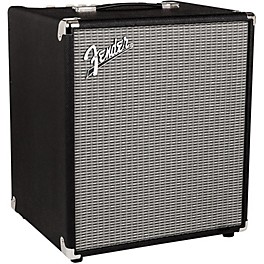Bass Amplifiers
Best Match
2,284 matches found
Save 10%
Save 10%
$33.98/mo.‡ with 48-month financing*
Learn More
Save 10% In Cart
$25.50/mo.‡ with 48-month financing*
Learn More
Save 10%
$28.90/mo.‡ with 24-month financing*
Learn More
$13.82/mo.‡ with 48-month financing*
Learn More
Save 10%
$127.50/mo.‡ with 24-month financing*
Learn More
Save 10%
Top-Seller
$23.80/mo.‡ with 24-month financing*
Learn More
$25.50/mo.‡ with 48-month financing*
Learn More
Save 10%
$18.07/mo.‡ with 48-month financing*
Learn More
$17.00/mo.‡ with 48-month financing*
Learn More
Top-Seller
OpenBox:$236.72
Save 10%
$21.25/mo.‡ with 48-month financing*
Learn More
$29.73/mo.‡ with 48-month financing*
Learn More
Top-Seller
Top-Seller
OpenBox:$1,143.12
$26.57/mo.‡ with 48-month financing*
Learn More
Top-Seller
Top-Seller
OpenBox:$835.99
On Sale
Top-Seller
Bass amplifiers are distinct from other types of amplification systems due to the particular challenges associated with low-frequency sound reproduction. This distinction affects the design of the loudspeakers and the speaker cabinet, as well as the preamp and amplifier.
Speaker cabinets for bass instrument amplification usually incorporate larger (or more) loudspeakers than those used for the amplification of other instruments. The loudspeakers themselves must also be sturdier to handle the higher power levels. Bass instrument speaker cabinets are typically more rigidly constructed and heavily braced than those for non-bass instrument amplification. They usually include tuned bass reflex ports or vents for increased efficiency at low frequencies.
Bass amplifiers are more likely to be designed with cooling fans than regular guitar amplifiers, due to the high power demands of bass amplification. They are also more commonly equipped with limiter circuitry to prevent overloading the power amplifier and to protect the speakers from damage.
Tube Bass Amps
Vacuum tubes were the dominant active electronic components in bass amplifiers manufactured until the early 1970s, and tubes continue to be used for higher-end units. Many bass players believe that tube amplifiers produce a "warmer" or more "natural" sound than solid-state amplifiers when lightly or moderately driven, and more pleasing distortion characteristics when overdriven. Some also believe that they have a greater level of perceived loudness for a given amount of amplifier power.
Solid-state Bass Amps
During the 1960s and 1970s, semiconductor transistor-based amplifiers began to become popular. This was, in large part, because solid-state amps are less expensive, lighter weight, and require less maintenance than tube amplifiers. In some cases, tube and solid-state technologies are used together, usually with a tube preamp driving a solid-state power amplifier. There is also an increasing range of products that use digital signal processing and digital modeling technology to simulate many different combinations of amp and cabinets.

